Let’s talk about Silicon Valley Bank (SVB). The tech industry’s go-to lender just became the second-largest bank failure in US history. The bank’s customers withdrew $42 billion from their accounts on Thursday. That’s $4.2 billion an hour, or more than $1 million per second for ten hours straight.
We ancient, moss-covered former bankers call this a bank run. That occurs when a large number of customers of a bank withdraw their deposits simultaneously over concerns about the bank’s solvency.
Nearly half of all venture-backed US companies were SVB customers. We’re unsure why the run started, but on Thursday, several Venture Capital firms started telling their client companies that pulling cash from SVB was prudent, and the run began.
While bank deposits are insured by the Federal Deposit Insurance Corporation (FDIC) up to $250,000, few of SVB’s deposits, by value, were FDIC insured, since its customers were overwhelmingly corporations with much more than $250,000 in the bank. By Friday, there was no cash left in SVB’s coffers. In fact, the cash on hand was negative, to the tune of $958 million.
Do you remember when Trump and Republicans rolled back some of the regulations Dodd-Frank placed on regional banks?:
“Some banking experts on Friday pointed out that a bank as large as Silicon Valley Bank might have managed its interest rate risks better had parts of the Dodd-Frank financial-regulatory package, put in place after the 2008 crisis, not been rolled back under President Trump.”
Trump signed the bill despite a report from Democrats on Congress’s joint economic committee warning that under the new law, SVB and other banks of its size:
“…would no longer be subject to nearly any enhanced regulations”.
This also affects ordinary people. Wrongo has a California friend who banks with SVB. Here’s a quote from her:
“While I’ve been waiting to sign the purchase contract on a condo, I woke to the news that my lender Silicon Valley Bank has been closed and taken over by regulators. That concludes literally 8 months of working on this….and the end of my effort to buy a home.”
So don’t listen to the pleas for another bank bailout. Wrongo would be okay with bailouts if they were accompanied by personal accountability by management. Like, we’ll rescue your institution, but none of the bank senior management can ever work in finance again. On to cartoons.
Tucker’s mendacity:
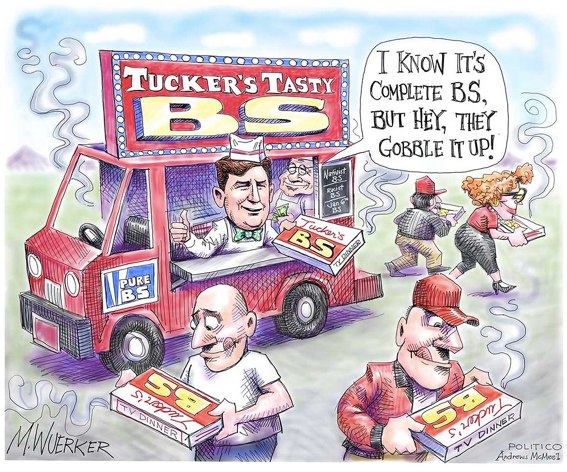
It takes two teams to play:
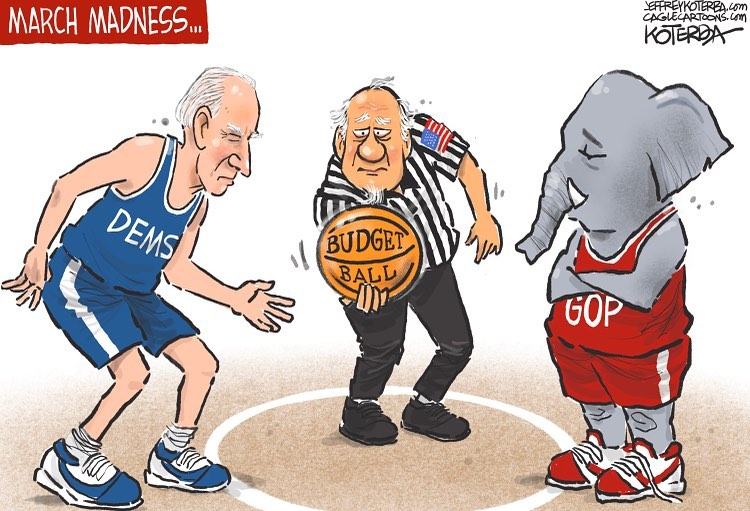
Walmart’s OK with pills for boners, but not for pregnancy:
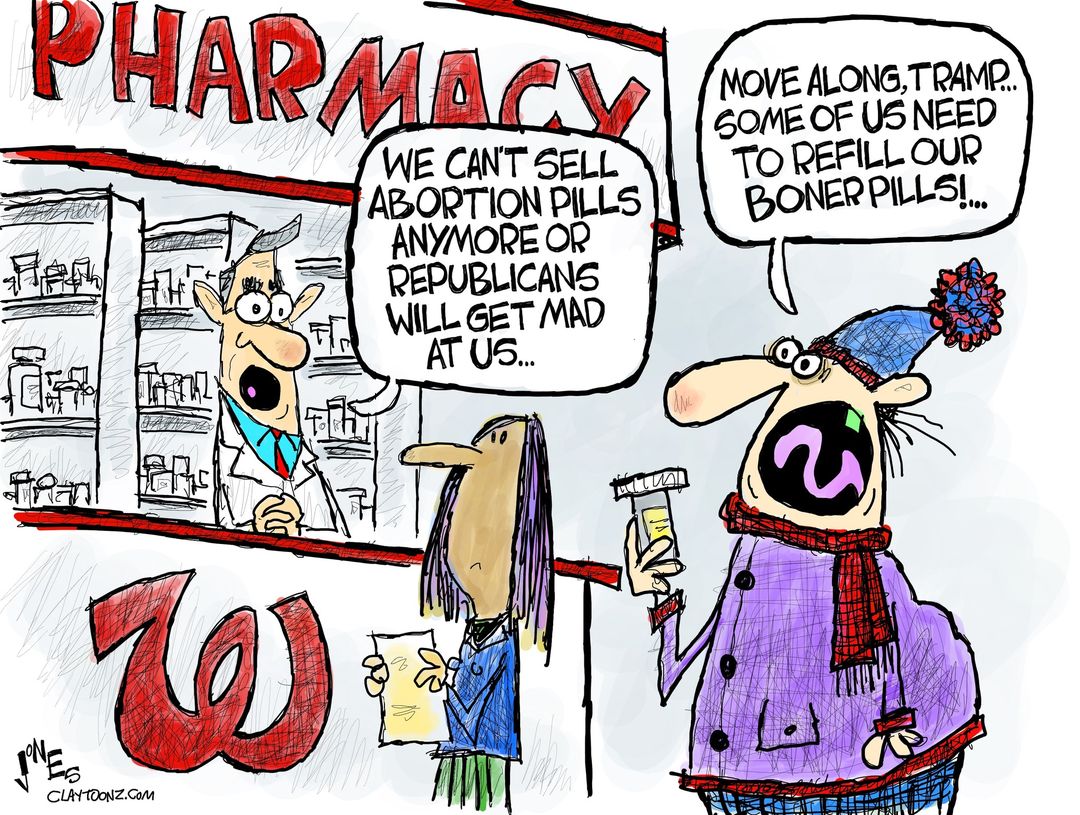
GOP wants to regulate Trans not Trains:
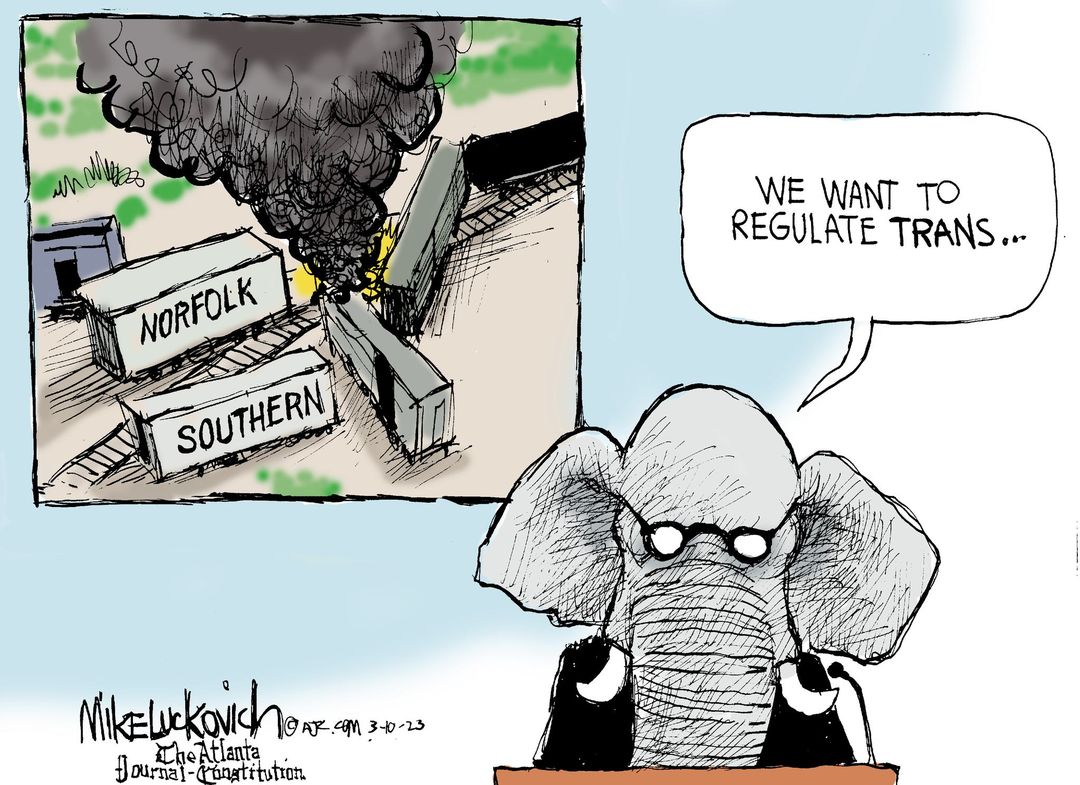
GOP loves doormats:
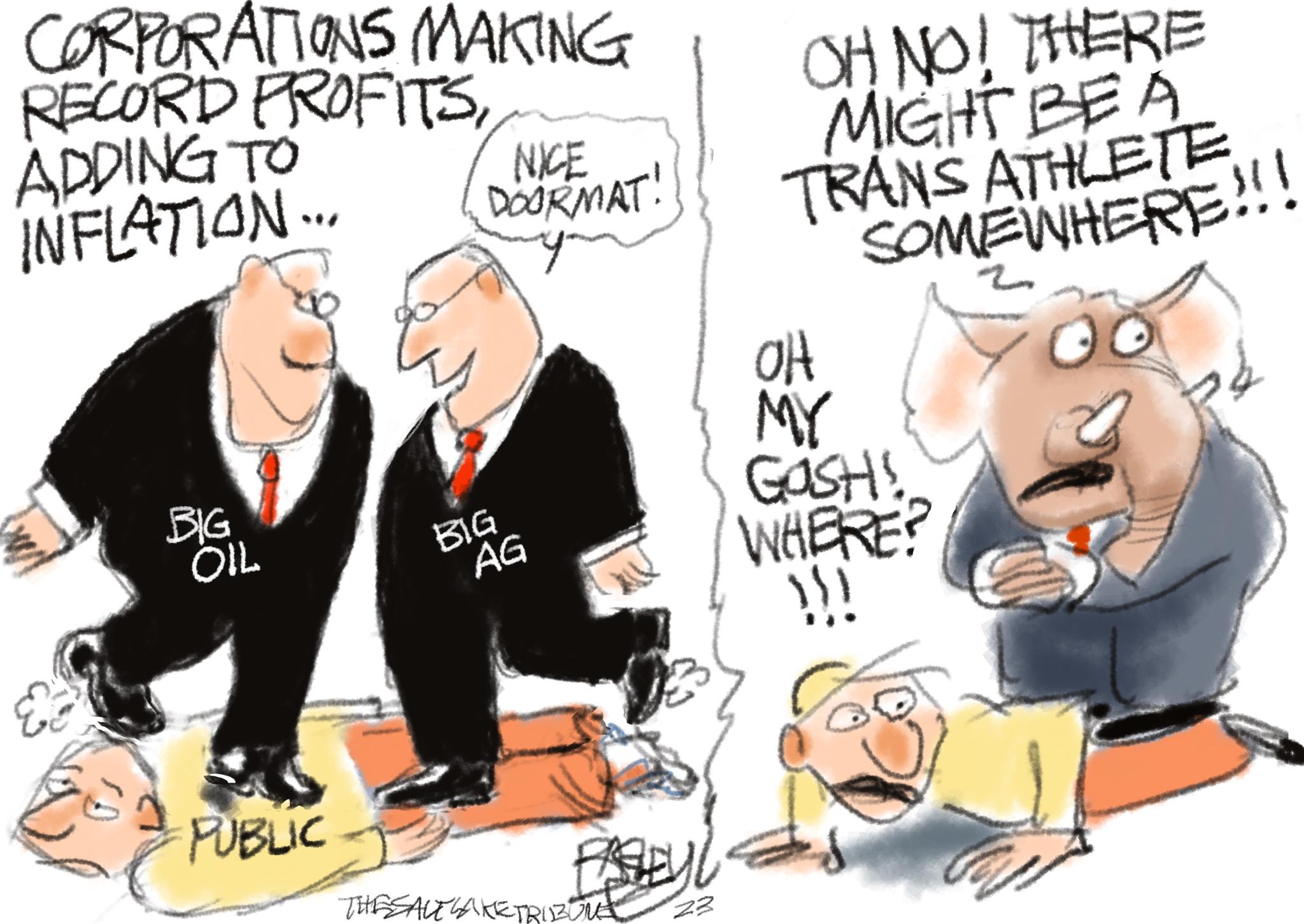
Most appropriately named movie of this or any year:


Republicans bristle at regulations and yet when regs are softened, shit happens. I don’t know what happened here. Could it be that they had a customer base to easily contacted by email and ready to withdraw funds? I bank at Valley Bank (NJ, NY and FL) and their customer base are largely businesses like auto dealers etc – but not likely to be as clued in as businesses in the tech sector. So a run on SVB would have been quicker to start? And deeper as big accounts are withdrawn? (The typical small business does not hold large sums in their accounts – so withdrawals would be smaller and slower on a bank like mine? )
Wish I knew more. Any details to add?
@ Terry, several points to add. First, the SVB CEO Greg Becker cashed out of his stock options in the weeks before the bank’s collapse last Friday. He netted $2.27 million in profit. Think he knew something? Second, the bank paid bonuses ranging from $12k to $140k to employees hours before the bank was seized. Third, on Wednesday before the Friday collapse, Moody’s had an A3 rating on SVB Financial, owner of SVB, even though it was clearly collapsing. A3 is a very respectable rating. But on Friday, Moody’s downgraded SVB by 13 notches to its lowest rating, C, which is Moody’s rating for default. This also happened during the 2008 bank crisis, Moody’s missed the move.
Finally, most of SVB’s assets were held in long-term government bonds that pay a fixed rate, so when market interest rates went up during the Fed’s fight against inflation, there was a gap between how much the bonds were worth in the open market and what they were valued at on the bank’s books. By December 2022, the unrealized losses in SVB’s securities portfolio was more than $17 billion. Then the bank had to sell bonds to raise cash to cover withdrawals, so they were sold at a loss. With the bank run, they were unable to raise the cash required to meet withdrawals and bingo, bankruptcy.
You say you’re not sure why the run started. From what I read it was massive losses in bond portfolio due to interest rate hikes. That would be a case highly speculative asset/liability (a.k.a. market risk) management. Reminds me of the S& L crisis in the 1980s.
Ottho, see my comments above. I meant that I was unsure about what started the bank run, not why they went belly up.
Thanks. I had heard about the interest rate issue but was not of the impact (so how large the difference between the value on the books and in the market). In 1987 I was a Prudential and we were told that a team was going through all of the company’s real estate portfolio to determine the real value. It was a similarly dicey time.
In any case paying bonuses with the cash on hand as a bank is losing cash is not a good business practice.
“The law” is not the only behavioral yardstick by which to judge those who grabbed the cash for themselves as those who “entrusted” their savings to them were left behind. Paying off insiders as the cash is disappearing is not the work of “fiduciaries.” Those responsible should never be allowed to work again in an enterprise that is, not just by regulation but by professional promise, pledged to put the interests of its customers first.